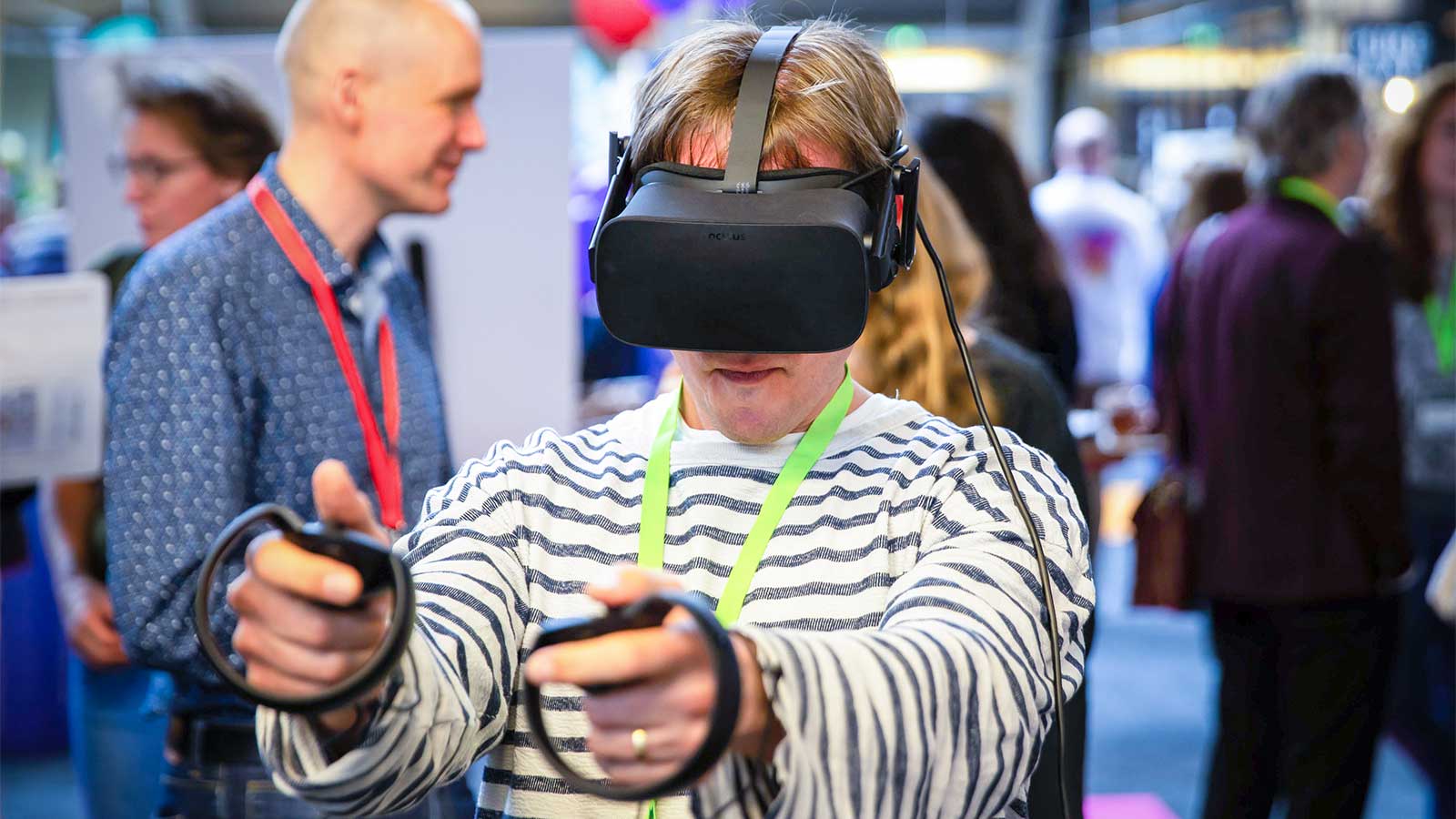Virtual reality embodies empathy in the workplace
Can virtual reality help us to understand what the other person is going through and to understand their feelings?

Take a walk in my virtual shoes
In the song “Walking in My Shoes” by Depeche Mode, you are advised to try and take a step in another person’s shoes before condemning their deeds:
“I’m not looking for a clearer conscience
Peace of mind after what I’ve been through
And before we talk of any repentance
Try walking in my shoes
Try walking in my shoes
You’ll stumble in my footsteps.”
If we follow this expression literally and try to walk in the shoes of someone else, we would need to imitate that person’s actions. Doing so could help us to understand what the other person is going through and to understand their feelings. We might also experience the same emotions that the person feels which may raise the desire to help this person or others in the same situation.
The human ability to place oneself in another’s circumstance is called “empathy.” However, humans tend to feel more empathy towards individuals similar or familiar to them, while dissimilar or unfamiliar individuals may be mistreated and misunderstood.
Help perspective-taking
Interestingly, by using virtual reality, we can virtually walk in the shoes of somebody else. The users of virtual reality may not only experience what it is like to be in another location (place illusion), or that the events happening around them are real (plausibility illusion) but also that an avatar can substitute their body (embodiment illusion). Instead of having to imagine the world from the perspective of another person, virtual reality allows us to place a person directly into the body of another person. It has been found that perspective-taking leads to rating oneself and another person more similar and to be a reliable method in reducing negative social stereotyping.
360-degree videos like Clouds over Sidra by the United Nations are one of the most popular strategies to increase empathy using virtual reality.
In this type of VR, people cannot interact with the scene, only look around by turning their heads. They can, however, get a glimpse of somebody else’s life in the first-person perspective, as if they would have been there. By demonstrating what it’s like to be another person – for example, by showing their daily lives, VR can decrease the distinction between them and us. This use case is an excellent opportunity for VR in corporate training because producing 360-videos is relatively low cost, fast, and not too demanding technically.
Improving communication
Seeing recordings of real-life through someone else’s eyes is not the only option to use VR for increasing empathy. Despite the challenges of the uncanny valley, the brain tends to process the virtual human representations as actual people resulting in authentic responses and behavior of the partakers when interacting with other people using avatars in a virtual environment. This makes collaborative or multi-user shared virtual environments such as Glue, an effective way to improve interaction and build trust and empathy between work community members, especially if teams are geographically separated.

Glue is a platform that provides shared virtual environments where participants can be present remotely in the same way as in face to face meetings. Human presence in Glue’s environment improves communication by increasing participation and ensuring engagement – making remote collaboration effective.

Using the Proteus Effect to affect stereotypes, self perception, and behavior
In virtual environments, user behavior may also be affected by the characteristics of the virtual body they are embodying. Despite the actual “knowledge” of the artificial nature of their experience, the behavior of a user embodying an avatar conforms to the virtual self-representation regardless of the actual physical self.
Users tend to adopt beliefs and attitudes fitting their virtual representations whether or not they fit their true self, though individuals may prefer to embrace desired aspects of their embodied avatar and desist some undesired traits such as narcissism. This so-called Proteus Effect seems to affect the person also in the actual world after the virtual reality experience.
Research suggests that even as the user might not realize it, they may become affected by the characteristics of their virtual reality avatars, such as gender or racial stereotypes. Individuals may also act friendlier towards other people in social interactions if their avatars are more attractive or behave more confidently with taller avatars.
Conclusion
Virtual reality may help users in perspective-taking, and it can be used to train social situations or to promote human interaction at remote meetings – it can even be used to inject or diminish stereotyped behaviors in users. Besides the knowledge and skills directly related to the job, virtual reality can be used to develop employees’ mental qualities. 3D animated scenarios in a virtual learning environment have been successfully used to help people that are deficient in empathy.
But why is empathy so important in work life? Studies have shown that more empathetic companies can outperform their counterparts. When employees feel understood, they’re more receptive to others’ concerns, which improves team cohesion and collaboration. They’re also more apt to take risks, believing that they’ll be supported, rather than punished if they fail.




